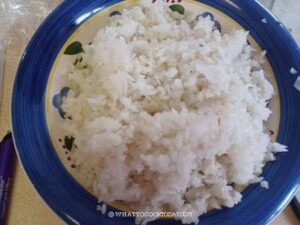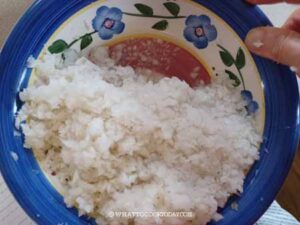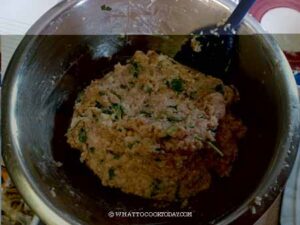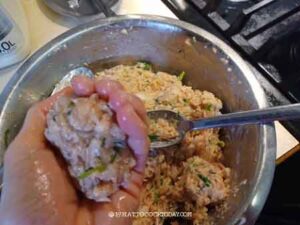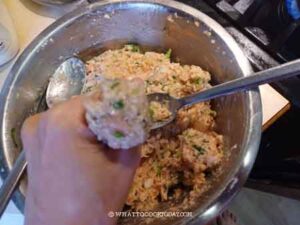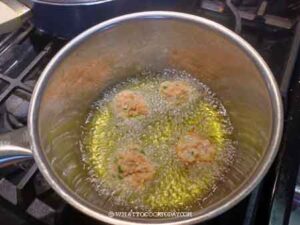This post may contain affiliate links. Please read our disclosure policy.
These meatballs are so flavorful with their crisp texture on the outside and tender on the inside. They are perfect companions for any meals.
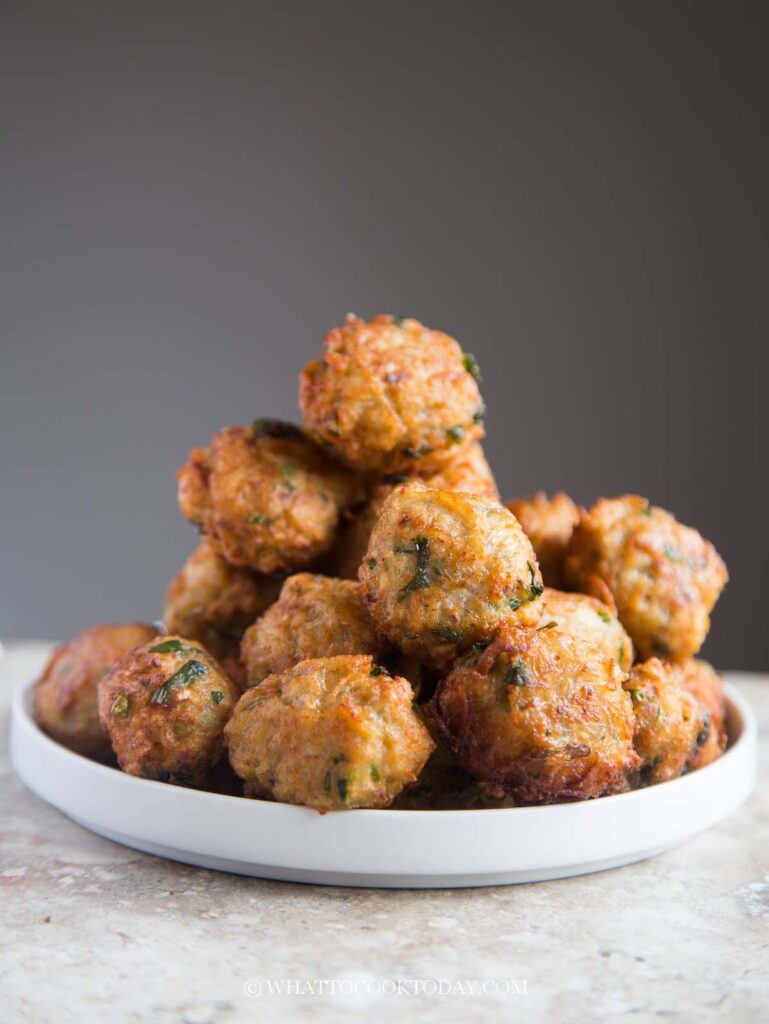
Why meatballs for Chinese New Year?
Meatballs are round in shape, and in Chinese culture, round foods are associated with reunion and completeness. The round shape symbolizes unity and family togetherness, making it a fitting choice for the Chinese New Year, which is a time when families come together to celebrate and share a meal. Lion’s head meatball is the most popular one. The word for meatball in Mandarin Chinese, “肉丸” (ròu wán), also sounds similar to the word for “reunion” or “团圆” (tuán yuán). This linguistic connection adds another layer of symbolism to the choice of meatballs during the Chinese New Year, reinforcing the idea of family unity and coming together.
What are Chinese daikon/radish meatballs?
Daikon/radish (also known as Asian turnip, though not really a turnip and also carrot, though not a carrot either) in some cultures, is associated with good fortune.They are meatballs made with ground pork, grated radish, herbs, and seasonings. The amount of radish used in the recipe is pretty significant.Radish in Hokkien dialect is 菜頭; chhài-thâu, which is a homophone for “good fortune” (彩頭). Of course you can always make these meatballs anytime throughout the year.

Fried Radish/Daikon Meatballs
Ingredients
- 700 g daikon grated
- Salt to draw out water from the veggies
- 70 g mungbean thread noodles
- 500 g ground pork
- 80 g bread crumb
- 50 g egg
- 15 g green onion finely chopped
- 15 g ginger grated
- 20 g cilantro finely chopped
- ¼ tsp baking soda
- ½ cup cornstarch
Seasonings:
- 1 Tbsp soy sauce
- 1 Tbsp oyster sauce
- 1 tsp sesame oil
- 1 Tbsp cooking wine
- ¼ tsp ground white pepper
For frying:
- 2 cups Oil or more as needed
Instructions
Prepare the radish/daikon:
- Peel the skin of the daikon with a peeler. Use a box grater and grate the daikon. You can also cut them into large chunks and put them in a food processor (not a blender, because blender will overprocess the daikon) and give them a pulse a few times until they are finely chopped. Don't overprocess into a mush however

- Toss with about 1/2 teaspoon of salt and let them sit for 15 minutes while you prepare other things
- After 15 minutes, the salt has drawn out some liquid from the daikon. Squeeze out the excess liquid. You don't have to squeeze too hard. We still want some moisture in the veggies so the meatballs won't be dry, we just don't want too much moisture

Prepare other things:
- Soak the mung bean noodles in warm water until they are soft. Cut into smaller pieces

- Finely chop the green onion and cilantro leaves. Finely grate the ginger
Put everything together:
- In a large mixing bowl, add ground pork and the seasoning ingredients. Stir with a chopstick in one direction until it forms a sticky paste consistency. Then add the rest of the ingredients.

- Mix it again to make sure all are evenly combined

- You can cover and keep this in the fridge for about a day if not using right away. The longer you keep them in the fridge, the veggies may make the meatballs softer because more liquid is drawn out from the veggies. So I don't recommend keep it for more than a day
Frying:
- Preheat oil in a skillet, about 1 inch deep over medium heat. If you have an instant-read thermometer, 300 F (150 C) is perfect
- Now use your hand to scoop up some meatball paste

- Then squeeze the paste so it comes out in between your thumb and index finger and put it on a spoon. Make sure you squeeze it hard so the meatball paste is dense and round.

First frying:
- Put the meatballs in the oil. The oil won't be sizzling hot at this point. Just keep shaping the meatballs with your hand and put them in the oil. You need to cook this in batches. About 15-20 meatballs per batch is reasonable, depending on how large your skillet is. You don't want to cook too much per batch as the oil temperature will drop too much. Once the amount of meatballs you want to fry are in, increase the temperature up a notch to let them fry gently until just lightly golden brown. The meatballs aren't fully cooked yet at this point. You don't want them to fry too dark in this first round of frying

- You can finish frying the rest of the meatballs. Put them on absorbent paper towel.
Second frying:
- Let the oil come up to 300 F (150 C) again. Put the meatballs back in, in batches, and let them fry again until nicely golden brown this time. The outside is crisp, but the inside is still tender and juicy. This may only take a minute or so. Remove from the oil and place on absorbent paper towel
To serve:
- Serve them warm
How to store:
- Leftovers can be kept in air-tight container for 2-3 days. Simply reheat in microwave until heated through, which may take only few seconds on high power
- For longer storage, let the meatballs cool down completely. Store the meatballs in freezer-friendly bag, push all the air out and seal. They can be kept frozen for about a month. Simply thaw overnight in the fridge. You can reheat in the microwave or reheat at 320 F (160 C) in air fryer if you have one for 5 minutes or so or until heated through
*Nutrition facts are just estimates and calculated using online tools*
Other Asian meatball recipes you may like
1. Red-braised Lion’s head meatballs
2. Cantonese-steamed beef balls
3. Bakso ayam (Chicken meatballs)
Did you make this fried daikon/radish meatball recipe?
I love it when you guys snap a photo and tag it to show me what you’ve made. Simply tag me @WhatToCookToday #WhatToCookToday on Instagram and I’ll be sure to stop by and take a peek for real!

